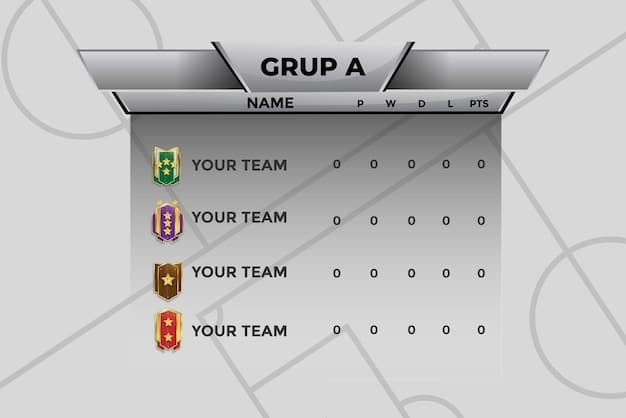King’s League USA: Who Climbed the Standings This Season?

King’s League USA has witnessed some dramatic shifts in the standings this season, altering the competitive landscape and reshaping expectations for playoffs.
The King’s League USA: The Biggest Climbers in the Standings This Season – What’s Changed? It’s time to dive into the key changes that have influenced these shifts.
King’s League USA: A Quick Recap
King’s League USA has captivated audiences with its unique blend of soccer and entertainment. This section provides a handy primer to understand the league’s format, its key players, and its impact on the sports scene. Key aspects include the league’s structure, the impact of celebrity involvement, and recent rule adjustments that have influenced gameplay.
The league, inspired by its original iteration, brings together teams that compete in a fast-paced, engaging format that differs significantly from traditional soccer. These differences not only make the games more accessible, but also enhance the overall viewing experience.
Key Format Differences
King’s League USA isn’t just another soccer league; it’s designed for maximum excitement and fan engagement. Understanding these format tweaks is key to appreciating the strategic shifts in team performance and standings.
- Shorter Game Durations: Games are shorter, increasing the urgency and intensity of every match.
- Special Card Abilities: Teams can use special cards to gain advantages, adding a layer of strategy.
- Modified Rules: Rule tweaks like rolling substitutions keep the game dynamic and fluid.
League dynamics are also significantly affected by these format differences, influencing how teams strategize and compete.
The league’s foundation lies in its innovative approach to soccer, designed to appeal to a broader audience. With shorter matches and strategic cards, every game promises unpredictability and excitement.

Standings Before and After: A Comparative Look
To truly appreciate the climb, let’s examine where teams stood at the beginning of the season compared to their current positions. This comparison illustrates not just who moved up, but also the magnitude of their improvement.
This section will detail which teams started strong, which faltered, and which teams executed impressive comebacks.
Early Season Expectations
At the season’s outset, certain teams were pegged as frontrunners due to their rosters and preseason performances. However, as the season unfolded, some of these teams faced unexpected challenges, leading to shifts in the standings.
- Initial Favorites: Notable teams expected to lead early on based on player acquisitions.
- Underdog Teams: Teams that were not initially favored but showed promise.
- Mid-Table Stability: Teams predicted to remain in the middle due to consistent performance.
How accurate were these predictions and what caused the deviations? The answers reveal the dynamic nature of King’s League USA.
The expectations set at the beginning of the season played a crucial role in how teams strategized and how fans perceived their performance. However, the reality often diverged sharply from these initial forecasts.
The Biggest Climbers: Tactical and Personnel Changes
Which teams managed to defy expectations and climb the standings? This section highlights the most significant climbers, detailing the changes they implemented to improve their performance.
The specific tactical changes, new player integrations, and strategic realignments these teams embraced will be illuminated.
Key Climbers and Their Adjustments
Several teams have dramatically improved their standings through strategic adjustments. These include changes in coaching, player acquisitions, and tactical overhauls.
- Coaching Changes: New coaching strategies that revitalized team play.
- Player Acquisitions: Key players brought in to fill strategic gaps.
- Tactical Overhauls: Major shifts in formation and playing style that maximized team strengths.
The discussion will focus on concrete examples of how these adjustments translated into on-field success.
The teams that improved most significantly often did so by making decisive changes that addressed their weaknesses and amplified their strengths. These changes provide valuable lessons for other teams in the league.

Impact of Key Matches and Unexpected Upsets
No season is without its pivotal matches and shocking upsets. These games often serve as turning points, either propelling teams forward or setting them back.
This section examines specific matches that significantly altered the trajectory of climbing teams, highlighting key plays and decisions.
Turning Point Games
Certain games had a disproportionate impact on the standings, serving as springboards for some teams and setbacks for others. This section will explore a few of these pivotal matches.
The key moments, player performances, and strategic decisions that defined these games will be analyzed.
The results of these matches not only changed the standings, but also influenced team morale and future strategies.
The analysis will focus on how each team leveraged these moments to their advantage or succumbed to the pressure.
Key matches and unexpected upsets often serve as catalysts for change, forcing teams to re-evaluate their strategies and adapt to the evolving competition.
Analyzing Tactical Shifts That Led to Success
What strategic shifts did these teams employ to fuel their climb? This section dives deep into the specific tactics, formations, and playing styles that contributed to their rise in the standings.
The analysis will cover changes in offensive and defensive strategies, as well as adjustments in player roles and responsibilities.
Detailed Tactical Breakdowns
Examining the specific tactical adjustments made by climbing teams reveals a pattern of strategic innovation and adaptation. Key areas of focus include:
How teams adapted their offensive strategies to exploit opponent weaknesses;
How defensive formations were tweaked to stymie attacks;
The roles certain players took on to maximize the team’s tactical advantage.
The use of analytics and real-game examples will illustrate the effectiveness of these strategies.
By understanding these tactical changes, other teams can learn valuable lessons on how to adapt and improve their own strategies.
Looking Ahead: Can the Climbers Maintain Their Momentum?
Now that these teams have climbed the standings, the question is: can they maintain their momentum? This section assesses the factors that will determine whether they can sustain their success.
The discussion will cover upcoming challenges, potential obstacles, and areas for continued improvement.
Challenges and Opportunities Ahead
The sustainability of recent successes hinges on how teams address upcoming challenges and leverage opportunities. Key factors to consider include:
The impact of player fatigue and injuries as the season progresses;
The need to adapt to evolving opponent strategies;
The importance of maintaining team morale and cohesion.
The analysis will provide insights into how these teams can continue their upward trajectory.
Maintaining momentum requires a combination of continuous improvement, strategic adaptation, and resilience in the face of adversity.
| Key Aspect | Brief Description |
|---|---|
| 🚀 Tactical Changes | Teams adopted new formations and strategies to climb. |
| 🌟 Player Impact | Key player acquisitions significantly boosted performance. |
| 🏆 Upsets Matter | Critical matches and upsets reshaped standings. |
| 🔮 Future Stability | Maintaining momentum depends on adapting to challenges. |
Frequently Asked Questions
▼
King’s League USA is an innovative soccer league featuring shorter matches, special cards for strategic advantages, and modified rules, designed to maximize excitement and fan engagement.
▼
Teams often implemented new formations, adjusted player roles, and optimized their offensive and defensive strategies to exploit opponent weaknesses and enhance overall performance.
▼
Key player acquisitions can significantly boost a team’s performance by filling strategic gaps, improving team dynamics, and providing crucial skills that enhance competitiveness.
▼
Matches become turning points due to unexpected outcomes, strategic moments, and individual performances that can either propel teams forward or significantly set them back.
▼
Sustaining an upward trajectory requires continuous improvement, strategic adaptation to evolving opponents, maintaining high team morale, and resilience to overcome challenges and setbacks.
Conclusion
In summary, the King’s League USA’s season has been marked by significant shifts in standings, largely driven by strategic tactical changes, impactful player acquisitions, and key match outcomes. As teams look ahead, their ability to adapt and innovate will determine their sustained success.





